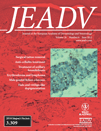
JOURNAL OF THE EUROPEAN ACADEMY OF DERMATOLOGY AND VENEREOLOGY
Scope & Guideline
Empowering Clinicians with Cutting-edge Insights
Introduction
Aims and Scopes
- Clinical Research and Trials:
The journal publishes original research articles, clinical trials, and systematic reviews that provide evidence-based insights into the effectiveness of dermatological treatments and interventions. - Dermatopathology and Histopathology:
There is a strong emphasis on the histopathological aspects of skin diseases, including advancements in diagnostic techniques such as reflectance confocal microscopy and line-field confocal optical coherence tomography. - Health-Related Quality of Life and Patient Perspectives:
The journal frequently addresses the psychosocial impact of skin diseases on patients, emphasizing the importance of patient-reported outcomes and quality of life assessments. - Innovative Treatments and Therapeutics:
Research on emerging therapies, including biologics and targeted treatments for various skin conditions like psoriasis, atopic dermatitis, and hidradenitis suppurativa, is a core focus. - Epidemiological Studies:
The journal publishes studies that analyze the prevalence, risk factors, and comorbidities associated with various dermatological diseases, contributing to a better understanding of these conditions in different populations. - Public Health and Policy:
The journal discusses public health initiatives, recommendations for vaccination and treatment protocols, and the impact of social and environmental factors on skin health.
Trending and Emerging
- Artificial Intelligence and Digital Health:
There is a growing trend in utilizing AI and digital technologies for diagnostics and treatment planning in dermatology, indicating a shift towards integrating technology in clinical practice. - Impact of COVID-19 on Dermatology:
Research exploring the effects of the COVID-19 pandemic on skin diseases, including vaccine-related reactions and long-term implications of SARS-CoV-2 infections, is emerging as a significant focus. - Personalized Medicine and Genomics:
The journal is increasingly publishing studies that explore genetic factors influencing treatment responses and disease susceptibility, particularly in conditions like psoriasis and atopic dermatitis. - Psychodermatology and Mental Health:
There is an expansion of research on the psychological impact of dermatological conditions, highlighting the intersection between mental health and skin diseases. - Holistic and Multidisciplinary Approaches:
Emerging themes reflect a growing recognition of the need for integrated care that addresses both physical and psychological aspects of dermatological conditions, fostering collaboration across specialties.
Declining or Waning
- Traditional Dermatological Techniques:
There seems to be a declining emphasis on older diagnostic methods as newer technologies like artificial intelligence and advanced imaging techniques gain traction. - General Dermatology Reviews:
While general reviews are still valuable, there is a noticeable decrease in publications that cover broad topics without a specific focus, as the journal shifts towards more specialized and innovative research. - Static Clinical Case Reports:
There is a reduction in the number of purely observational case reports, indicating a shift towards studies that include more substantial data analysis and treatment efficacy. - Historical Perspectives:
Papers discussing historical aspects of dermatology are becoming less frequent, as the journal prioritizes contemporary issues and advancements in the field.
Similar Journals
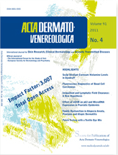
ACTA DERMATO-VENEREOLOGICA
Connecting researchers and practitioners through impactful findings.ACTA DERMATO-VENEREOLOGICA, published by the esteemed ACTA DERMATO-VENEREOLOGICA since 1945, stands as a leading open-access journal in the fields of Dermatology and Venereology. With an impressive Q1 categorization in both Dermatology and Miscellaneous Medicine, this journal ranks at the 82nd percentile among its peers, highlighting its pivotal role in disseminating cutting-edge research. Accessible to all since 1998, it provides a vital platform for sharing original studies, reviews, and insights on skin-related disorders and treatments, fostering knowledge expansion among researchers, professionals, and students alike. The journal's commitment to high-quality, peer-reviewed content ensures that it remains a trusted resource aimed at advancing dermatological science. Based in Uppsala, Sweden, ACTA DERMATO-VENEREOLOGICA continues to contribute significantly to the global discourse in dermatological health.
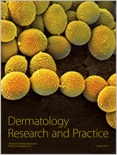
Dermatology Research and Practice
Pioneering studies that transform dermatological practice.Dermatology Research and Practice is a premier open access journal published by HINDAWI LTD, dedicated to advancing the field of dermatology since its establishment in 2009. With a respectable impact factor and a ranking of #42 out of 142 in the Scopus Medicine - Dermatology category, the journal stands in the 70th percentile, reflecting its influence and relevance in contemporary dermatological research. Based in Egypt, it provides a platform for groundbreaking studies that shape clinical practice and policy worldwide. The journal covers a wide range of topics within dermatology, including but not limited to clinical research, epidemiology, and patient care, making it an essential resource for researchers, healthcare professionals, and students seeking to enhance their understanding and contribute to the field. Emphasizing open access, Dermatology Research and Practice ensures that vital research findings are readily available to the global community, fostering collaboration and innovation in dermatology.

Acta Dermatovenerologica Croatica
Innovating Treatments, Enhancing LivesActa Dermatovenerologica Croatica is a premier journal dedicated to the fields of dermatology and venereology, published by the Croatian Dermatovenereological Society. Established in 1994, this journal has been a vital platform for disseminating research and advancements in the understanding and treatment of skin diseases and sexually transmitted infections. Although it is currently classified in the Q4 quartile for dermatology, infectious diseases, and miscellaneous medicine, it provides a unique opportunity for emerging researchers and seasoned professionals to contribute to a growing body of knowledge. Based in Zagreb, Croatia, the journal emphasizes free access to information that enhances clinical practices and scientific understanding among dermatologists and venereologists worldwide. As the journal approaches its 30th anniversary, it continues to aim for excellence in research quality, fostering collaboration, and innovating in the ever-evolving fields it represents.

CLINICAL AND EXPERIMENTAL DERMATOLOGY
Bridging the Gap Between Clinical and Experimental Dermatology.CLINICAL AND EXPERIMENTAL DERMATOLOGY is a prominent journal in the field of dermatology, published by Oxford University Press. With an ISSN of 0307-6938 and an E-ISSN of 1365-2230, this journal has been a vital resource for researchers and practitioners since its inception in 1976. Recognized as a Q2 journal within the category of dermatology for 2023, it holds a respectable position, ranking #54 among 142 journals in this discipline, placing it in the 62nd percentile on Scopus. The journal is dedicated to publishing high-quality research that spans clinical and experimental aspects of dermatological science, making it an essential source of knowledge for advancing understanding and treatment of skin disorders. Although it operates on a traditional subscription model without open access options, its contributions to the field are significant, influencing both clinical practices and academic research. Researchers, clinicians, and students alike will find vital insights and contemporary themes presented in its pages, supporting ongoing education and innovation in dermatology.
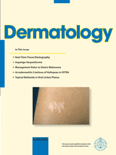
DERMATOLOGY
Unveiling breakthroughs in dermatological research.DERMATOLOGY, an esteemed journal published by KARGER, is a vital resource in the field of dermatological research and clinical practice. Established in 1893, with its comprehensive coverage extending to 2024, this journal has earned its place as a leading publication, holding a prestigious Q1 quartile ranking in Dermatology and ranking 15th out of 142 in the Scopus Medicine - Dermatology category, reflecting its 89th percentile standing within the discipline. The journal aims to disseminate innovative research findings, critical reviews, and clinical studies that advance the understanding of skin disorders and their treatments. While primarily available through institutional subscriptions, DERMATOLOGY remains committed to enhancing accessibility and fostering international collaboration among researchers, professionals, and students in the dermatological community. Its rigorous peer-review process guarantees the highest quality of published works, making it an essential reference for those dedicated to advancing dermatological science and improving patient care.

ARCHIVES OF DERMATOLOGICAL RESEARCH
Elevating Standards in Skin Health ResearchArchives of Dermatological Research is a premier journal dedicated to the rapidly evolving field of dermatology, published by Springer. With a distinguished history dating back to 1971 and indexed in the top quartiles (Q1 in Dermatology and Q2 in Medicine, 2023), this journal serves as a vital resource for researchers, clinicians, and students alike. It publishes innovative findings, critical reviews, and comprehensive studies that advance our understanding of dermatological conditions and treatments. The journal's commitment to disseminating high-quality research in a field crucial to public health emphasizes the importance of advancing knowledge in skin science and therapy. For those looking to explore significant advancements in dermatology, Archives of Dermatological Research offers an invaluable platform for scholarly discourse and knowledge exchange, though it is not an Open Access journal. Based in Germany, this publication attracts a global audience and remains at the forefront of dermatological research until its anticipated converged years reaching 2024.
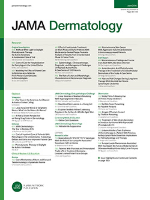
JAMA Dermatology
Advancing Dermatological Discoveries for a Healthier Future.JAMA Dermatology, an esteemed publication by the American Medical Association, is positioned at the forefront of dermatological research and clinical practice. With an ISSN of 2168-6068 and an E-ISSN of 2168-6084, this journal underscores a commitment to disseminating high-quality and impactful research within the field. Notably ranked Q1 in both Dermatology and Miscellaneous Medicine for 2023, JAMA Dermatology ranks among the top journals in its category, holding the impressive 3rd position out of 142 in Scopus's dermatology rankings, placing it in the 98th percentile. With converged years extending from 2013 to 2024, the journal emphasizes timely and critical advancements in dermatological science. Furthermore, as a champion of open access, it encourages a broad dissemination of knowledge, making essential research accessible to a wider audience. Researchers, professionals, and students alike will find JAMA Dermatology to be an invaluable resource for the latest findings, innovative therapies, and in-depth reviews that shape the future of dermatological health.

Hong Kong Journal of Dermatology & Venereology
Your Resource for Rigorous Dermatology ResearchThe Hong Kong Journal of Dermatology & Venereology is a vital publication in the field of dermatology, dedicated to advancing research and clinical practice in this specialized area. Published by MEDCOM LTD, this journal has been a resourceful platform for dermatologists, researchers, and students since its inception in 2005, showcasing rigorous original research, comprehensive reviews, and case studies pertinent to both dermatology and venereology. Although currently categorized in Q4 of the dermatology quartiles, it serves as an important voice for the region, contributing to the global dialogue on skin and sexually transmitted diseases. With an ISSN of 1814-7453, the journal aims to bridge gaps in understanding and foster innovations that will lead to better patient care and outcomes. Readers can access its content, while researchers are encouraged to contribute to this growing body of knowledge that plays a critical role in enhancing dermatological practice in Hong Kong and beyond.

Egyptian Journal of Dermatology and Venereology
Connecting Global Insights in Dermatology and VenereologyEgyptian Journal of Dermatology and Venereology is a premier peer-reviewed journal dedicated to advancing the fields of dermatology and venereology. Published by Wolters Kluwer Medknow Publications, this journal provides a vital platform for researchers, clinicians, and healthcare professionals to share cutting-edge research, case studies, and reviews that contribute to the understanding and treatment of skin and sexually transmitted diseases. With an ISSN of 1110-6530 and an E-ISSN of 2314-7407, the journal ensures global accessibility and visibility of its content, fostered by its commitment to high-quality publications. Although it operates with restricted access, the Egyptian Journal of Dermatology and Venereology remains an essential resource for practitioners and academics alike, supporting the dissemination of knowledge and innovation in skin health. Situated in Mumbai, India, the journal reflects a diverse pool of contributions that enrich our understanding of dermatological practices and principles on an international scale.

SKIN RESEARCH AND TECHNOLOGY
Advancing Dermatological Science through Innovation.SKIN RESEARCH AND TECHNOLOGY, a distinguished publication by Wiley, stands at the forefront of dermatological science, emphasizing innovative research and technological advances in skin health. With an ISSN of 0909-752X and an E-ISSN of 1600-0846, this journal serves as a vital platform for researchers and professionals to present their findings and engage in discussions surrounding skin biology, clinical practices, and therapeutic technologies. As evidenced by its respectable Q2 ranking in the dermatology category for 2023 and a Q3 status in miscellaneous medicine, the journal attracts a broad readership and contributes significantly to the field. Housed in the United Kingdom with publications spanning from 1995 to 2024, SKIN RESEARCH AND TECHNOLOGY continues to foster innovation and knowledge dissemination in skin-related research. While its Access options are not open, the impact of the journal remains prominent, appealing to academic professionals and students eager to explore emerging trends and advancements in dermatological studies.